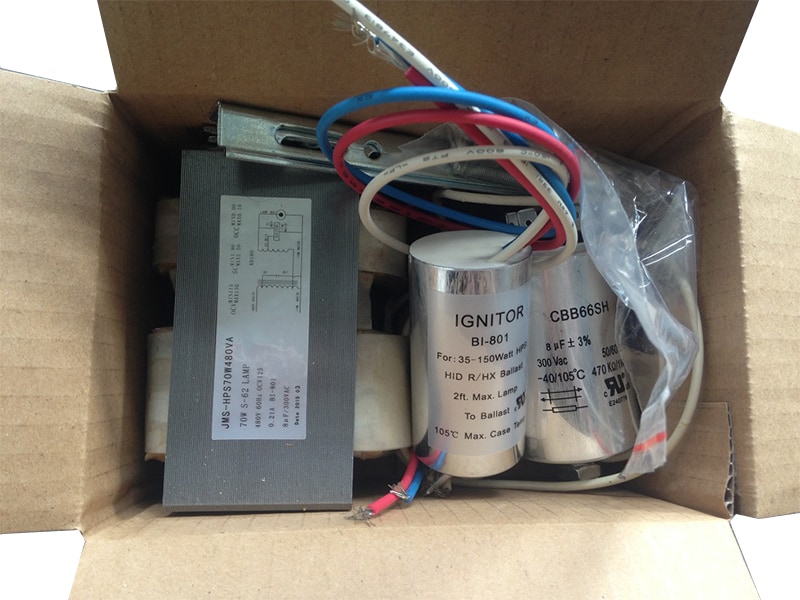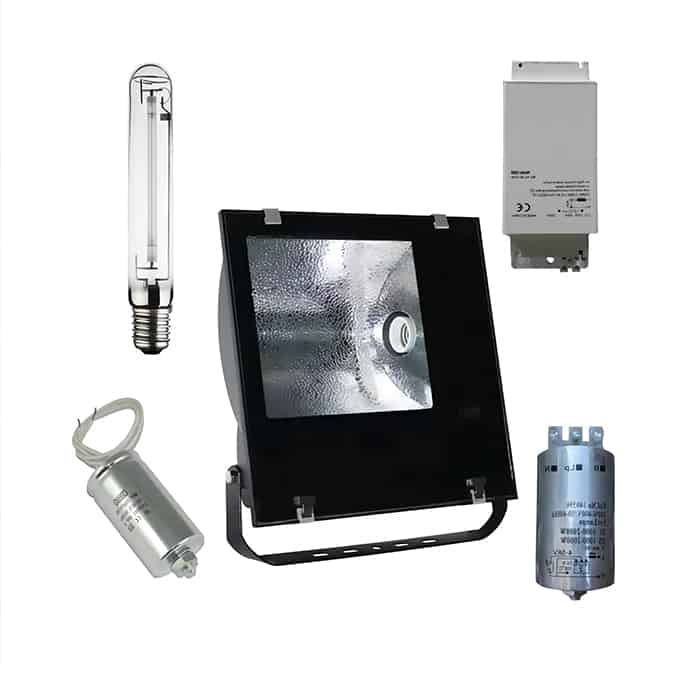Metal halide ballasts are essential components in high-intensity discharge (HID) lighting systems, playing a critical role in regulating the voltage and current needed to start and operate the lamp. But a common question arises: Does a metal halide ballast consume electricity when the bulb is not installed? Understanding this can help optimize energy usage and ensure the proper functioning of lighting systems.
A metal halide ballast is designed to regulate the electrical current supplied to the lamp, ensuring a steady and safe operation. It performs two primary functions: providing the high voltage needed to ignite the lamp and controlling the current during normal operation to prevent damage. This makes the ballast a vital part of HID lighting systems used in commercial, industrial, and even residential applications.
The operation of a metal halide ballast involves an initial high-voltage pulse to start the lamp. Once the lamp ignites, the ballast reduces the voltage to a lower level suitable for continuous operation while maintaining a stable current flow. This regulation prevents the lamp from overheating and ensures optimal performance. However, when the lamp is not connected, the behavior of the ballast changes depending on its design.
Whether a metal halide ballast consumes electricity without a bulb depends largely on the type of ballast. Magnetic ballasts, which use an inductor (coil) to regulate current, typically draw some power even without a lamp connected. This occurs because the coil continues to create a magnetic field as long as the ballast is powered. The amount of energy consumed is relatively small but still measurable. On the other hand, electronic ballasts, which use advanced circuitry to regulate voltage and current, may consume less energy without a bulb. However, they often have standby power consumption, meaning they draw a small amount of electricity to maintain the circuitry in readiness for operation.
Several factors influence the energy consumption of a metal halide ballast without a bulb. The type of ballast is a major determinant, with magnetic ballasts generally consuming more power in the absence of a lamp. The condition of the ballast also matters, as a faulty or aging ballast may draw more electricity than a properly functioning one. Additionally, the wiring and system configuration can affect power usage, particularly if the setup allows for unintended current flow.
Measuring the power consumption of a ballast without a bulb is relatively straightforward with the right tools. Using a power meter, you can check the electrical current drawn by the ballast when the lamp is removed. Signs such as heating or humming noises from the ballast also indicate that it is drawing power. For accurate results, it’s advisable to consult a professional electrician who can safely measure and interpret these readings.
The implications of ballast power consumption without a bulb are worth considering. Even small amounts of energy draw can add up over time, especially in systems with multiple ballasts. This can lead to unnecessary energy costs and reduce the overall efficiency of the lighting system. Additionally, operating a ballast without a lamp for extended periods may stress the ballast components, potentially shortening their lifespan and increasing maintenance costs.
To minimize power consumption, it’s essential to turn off ballasts when the bulb is not in use or needs replacement. Regular maintenance and inspections can ensure that ballasts operate efficiently and do not draw unnecessary power. Upgrading to electronic ballasts can also help, as they generally consume less standby power compared to magnetic ballasts.
Understanding this topic is particularly relevant for industrial and commercial settings where large numbers of metal halide fixtures are used. Facility managers can benefit from this knowledge by reducing energy waste and optimizing the performance of their lighting systems. Even residential users, such as those using metal halide systems for outdoor lighting or aquariums, can take steps to minimize energy usage by addressing ballast behavior.
The future of lighting systems is gradually shifting toward LED technology, which eliminates the need for separate ballasts. Integrated LED drivers perform similar functions to ballasts but are more energy-efficient and do not consume standby power when the light is off. This transition highlights the importance of understanding ballast energy consumption for those still using traditional lighting systems.
In conclusion, metal halide ballasts can consume electricity even without a bulb, with the extent of consumption depending on the ballast type and condition. Magnetic ballasts tend to draw more power, while electronic ballasts have lower standby consumption. To optimize energy efficiency and system performance, it’s crucial to turn off ballasts when not in use, regularly maintain the system, and consider upgrades to more efficient technologies. By addressing these factors, users can reduce energy costs and extend the life of their lighting systems.



